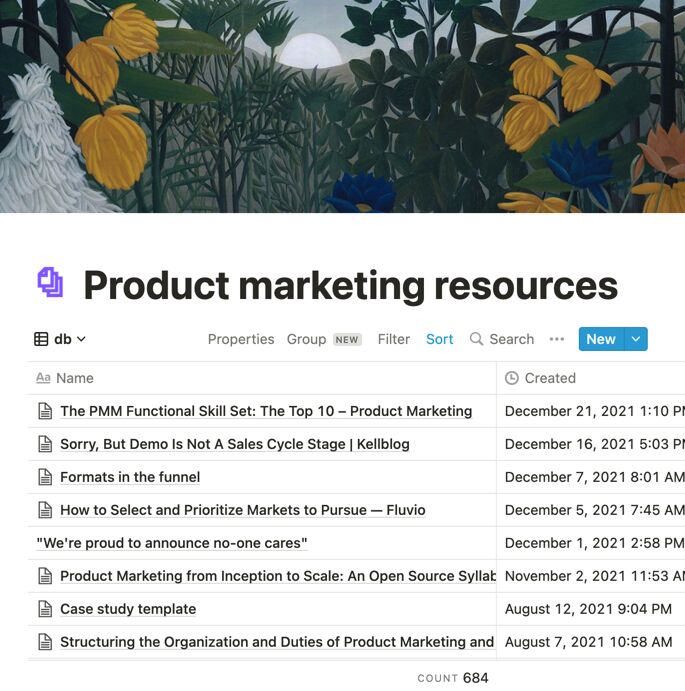Hey there. This is The Overview, a weekly roundup of noteworthy B2B SaaS stuff. You’ll find interesting thoughts, articles, and more from around the internet.
In this post:
Access my product marketing swipe file

I have 680+ articles, blog posts, tweets, and templates saved in my product marketing swipe file, stretching back 8 years. On every topic, from positioning, pricing, PR, product, sales, campaigns, strategy, project management… and more.
And I want you to have access to it all!
You can now access my product marketing swipe file when you sign up to the Building Momentum newsletter. I shared this on LinkedIn and it exploded with 42,000+ views and over 600 comments. I hope you find it useful.
I’d love your feedback too – tell me how you’ll use it, what else you want to see, and how it can be better!
Product knowledge expectations for product marketers
100%. As a product marketer, you should:
- Know how to achieve customer outcomes using your product – not just the features, but the business process
- Be able to give a passable customer demo that connects features to benefits and value
- Know how to navigate your customer-facing help center and find relevant support articles
- Have a handle on what core features are most requested by customers
- Know the features that are super critical, and what existing features could be cut without much complaint
- Know how different types of users (buyers, admins, managers, users) mostly use your product, and what they value about it
There’s probably a lot more, but understanding your product is the first step to understanding how it exists in your customer’s world.
Use the language your customer actually uses
In the same way we shouldn’t overestimate our customer’s maturity, we should use the language they connect with.
All-in-one, innovative, industry-beating, enhanced, and any other weasel word that you might use to spin your product in the best light? Pointless, even damaging.
Hopefully, it’s better than the meaningless word-vomit in this example:
Shape the language you use to fit your customer’s world. There’s no excuse for it anymore.
(If you need good examples of messaging, check out this post).
Thanks for reading! Let me know what you thought – find me on Twitter and LinkedIn.
P.S. If you’ve found value in Building Momentum, could you buy me a coffee? Here’s my tip jar – any support is gratefully appreciated!
P.P.S: If you enjoyed this post, will you share Building Momentum with your network?




